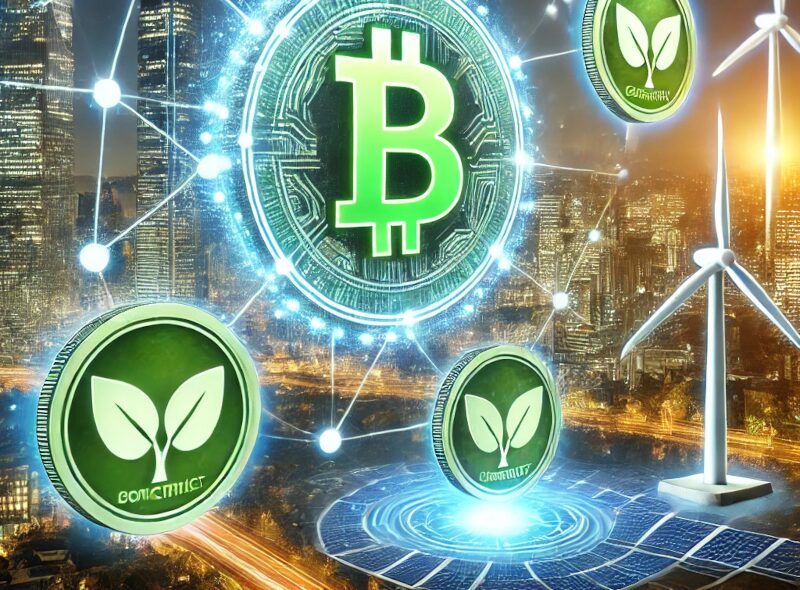The global race to reduce carbon emissions is colliding with the rise of blockchain technology, and the result is one of the most ambitious financial experiments of our time: tokenized carbon credits.
Governments, corporations, and environmental groups are all watching closely as blockchain-based carbon markets emerge, promising transparency, efficiency, and a new way to fight climate change.
But is this truly a revolution in green finance, or just another overhyped crypto trend?
What Are Tokenized Carbon Credits?
At its core, a carbon credit is a tradable certificate that represents the right to emit one metric ton of carbon dioxide or an equivalent amount of greenhouse gases. These credits are used in cap-and-trade systems, where companies or nations must stay within emission limits by either reducing pollution or buying credits from cleaner entities.
Tokenization takes this concept and moves it onto the blockchain. Instead of tracking credits through centralized registries, carbon credits are represented as digital tokens on decentralized ledgers.
This allows for near-instant trading, improved transparency, and increased market access for individuals and smaller businesses that previously found carbon markets too complex or expensive to enter.
Why Tokenized Carbon Credits Matter
The traditional carbon credit market has long been plagued by inefficiencies. Fraud, double counting, and lack of transparency have weakened its credibility. Blockchain technology aims to solve these issues by providing an immutable, verifiable record of each credit’s issuance, ownership, and retirement.
In theory, this should prevent the same carbon credit from being sold twice, increase confidence in green investments, and make the market more accessible.
It also has the potential to decentralize climate action, allowing individuals and smaller businesses to offset their carbon footprints in a way that was previously reserved for major corporations.
Who’s Leading the Charge?
Several projects and companies are pushing tokenized carbon credits into the mainstream.
KlimaDAO (KLIMA) A decentralized autonomous organization that aims to drive demand for tokenized carbon credits by allowing users to stake their tokens in exchange for rewards. By locking up credits, KlimaDAO creates artificial scarcity, theoretically raising the value of carbon offsets.
Toucan Protocol One of the first projects to bring carbon credits onto the blockchain, Toucan provides infrastructure for tokenizing verified credits and trading them on decentralized exchanges.
Moss.Earth (MCO2) A Brazil-based initiative that sells tokenized carbon credits backed by real conservation projects in the Amazon rainforest.
Verra & Gold Standard These are two of the largest carbon credit certifiers in the world. They have expressed caution about tokenization but are exploring ways to integrate blockchain to improve market transparency.
The Risks and Controversies
As with any emerging technology, tokenized carbon credits come with their share of risks.
Regulatory Uncertainty
Governments are still figuring out how to regulate blockchain-based carbon markets. If major regulators decide to crack down or impose strict rules, tokenized credits could struggle to gain mainstream adoption.
Quality Control Issues
Not all carbon credits are created equal. Some represent legitimate emissions reductions, while others have been criticized as low-quality offsets with questionable impact. Without strong oversight, tokenization could amplify these problems rather than solve them.
Speculation and Greenwashing
There’s also the risk that tokenized credits could become another speculative crypto bubble. If the focus shifts from actual carbon reduction to price speculation, it could undermine the entire purpose of the market. Additionally, corporations could use tokenized credits to claim they are “carbon neutral” without making real emissions reductions a classic case of greenwashing.
The Investment Case for Tokenized Carbon Credits
For investors, the appeal of tokenized carbon credits lies in their potential to become a new asset class. As more countries implement carbon pricing mechanisms and stricter emissions targets, demand for high-quality offsets is likely to rise.
Blockchain technology could make carbon trading more accessible, allowing individuals to invest in climate action without going through traditional brokers.
If the market matures and regulators support blockchain-based offsets, tokenized carbon credits could become a cornerstone of the green economy.
The Road Ahead
Tokenized carbon credits sit at the intersection of two major trends: climate finance and blockchain innovation. If done right, they could bring transparency and efficiency to a system that desperately needs reform.
But the risks related to regulation, speculation, and quality control cannot be ignored.
The real test will be whether tokenized carbon markets actually help drive emissions reductions or simply become another playground for crypto traders.




